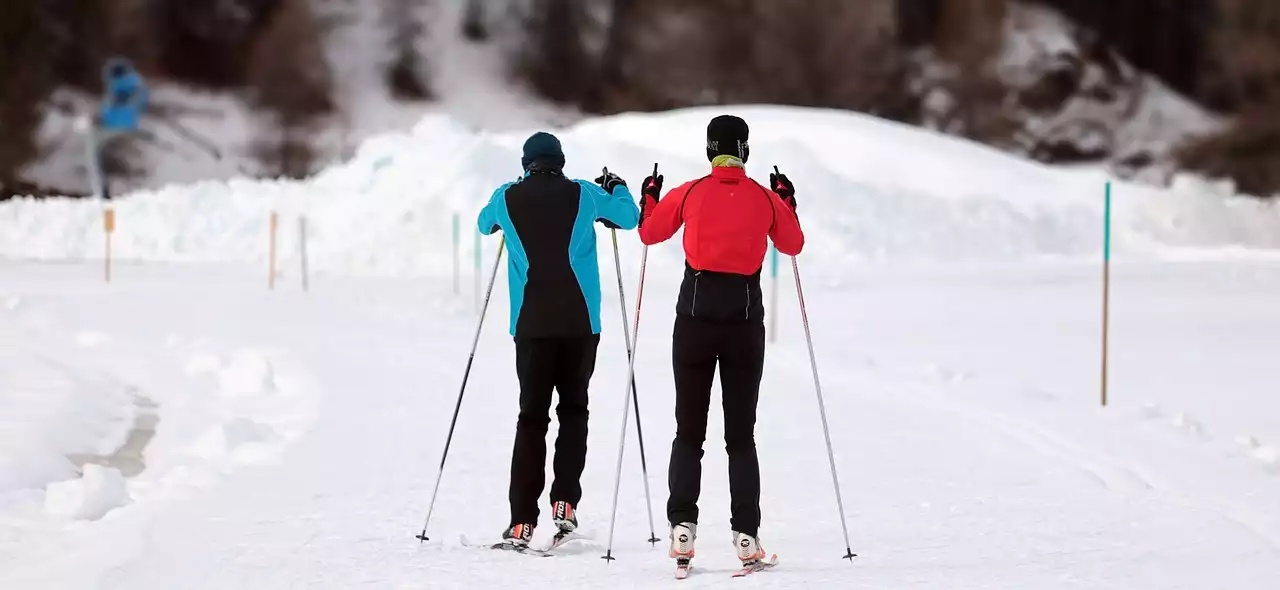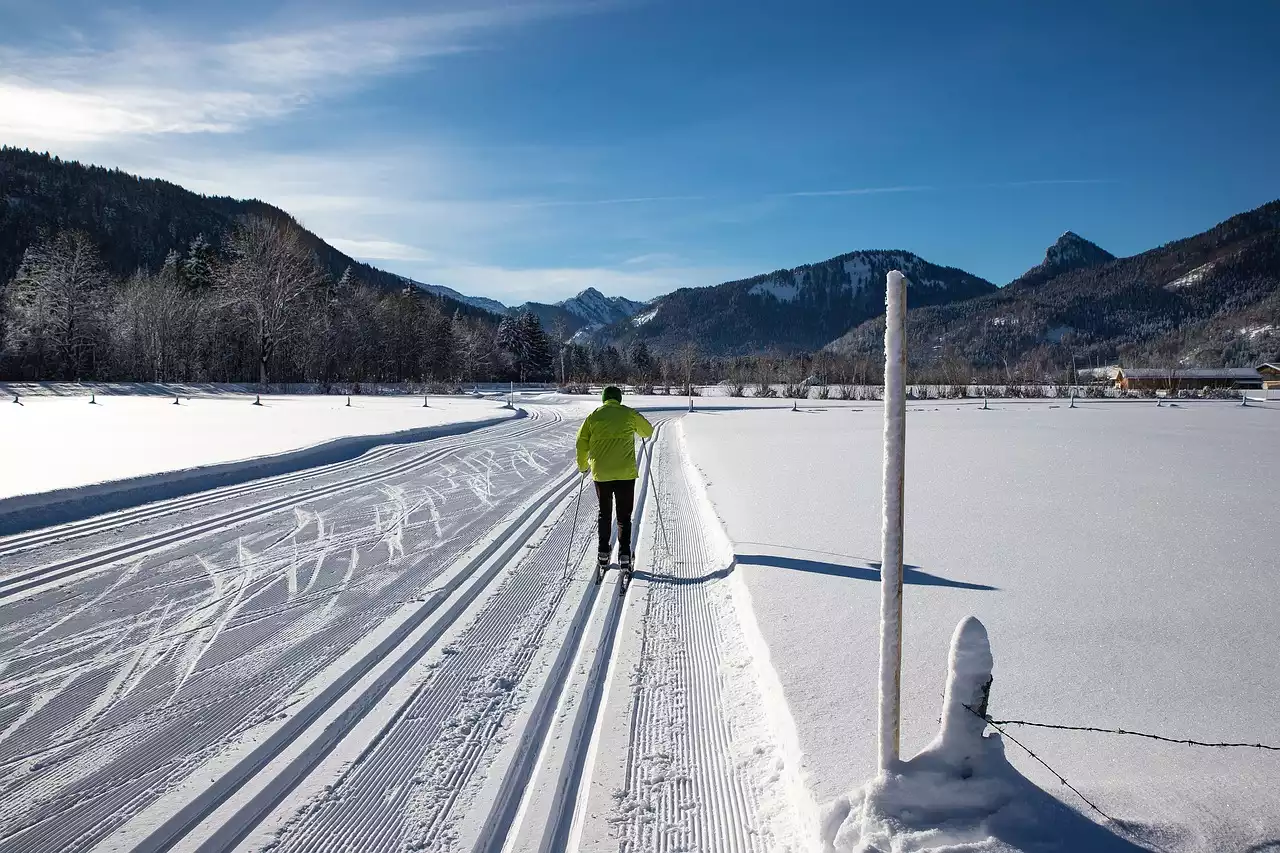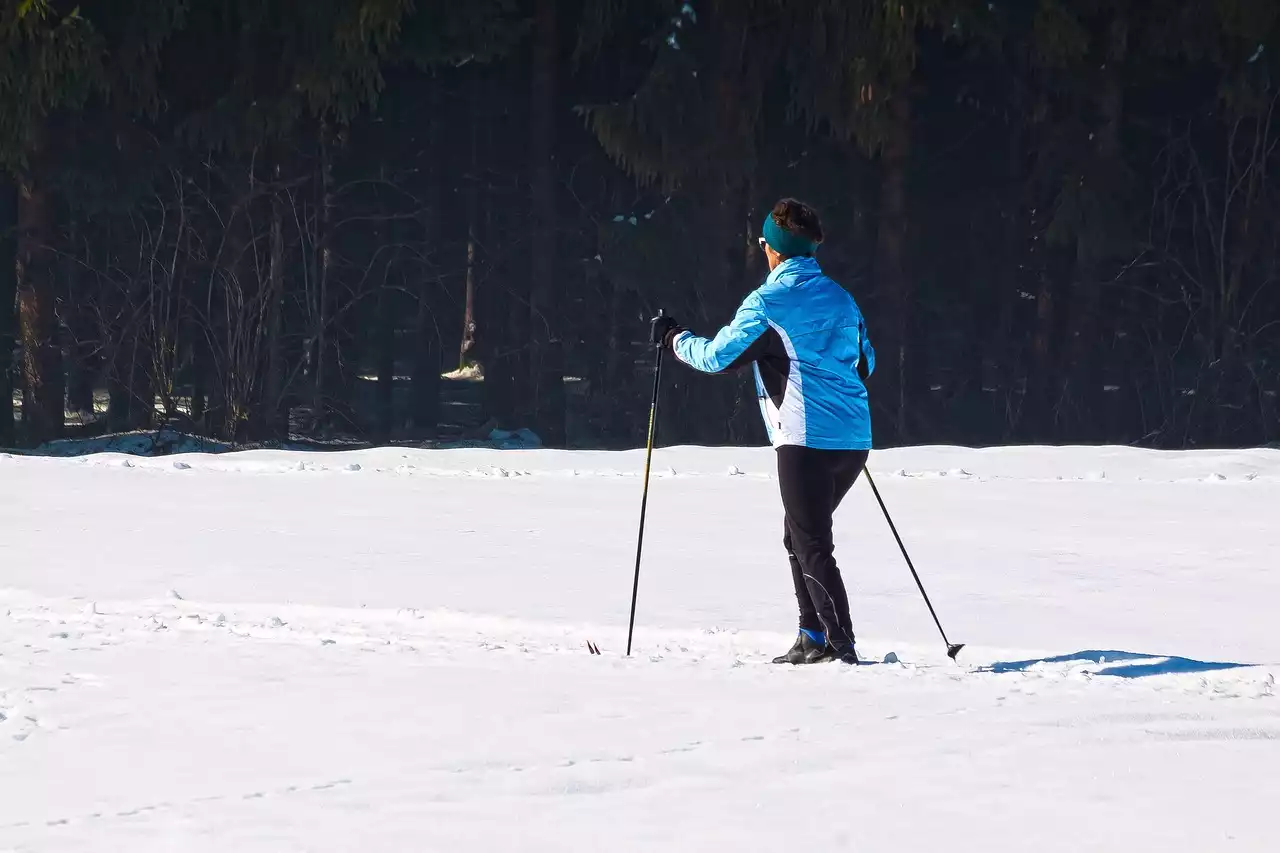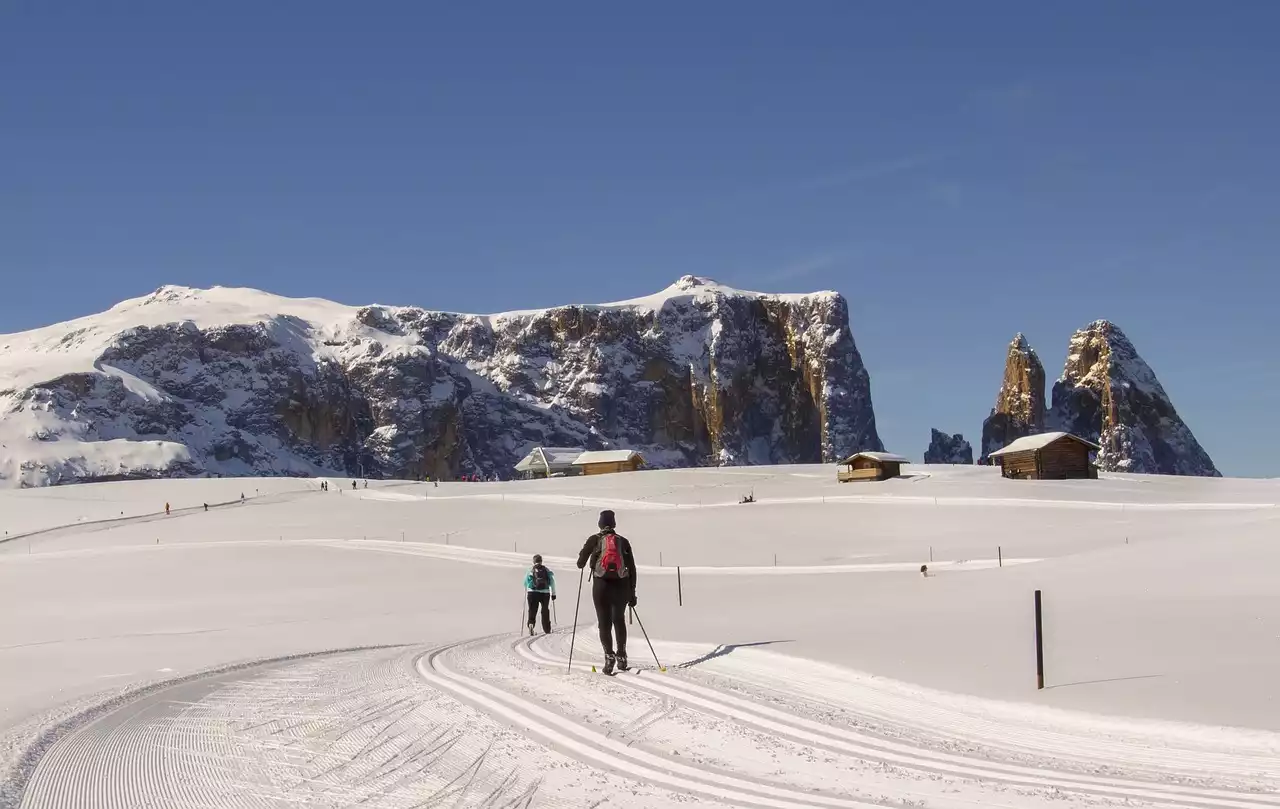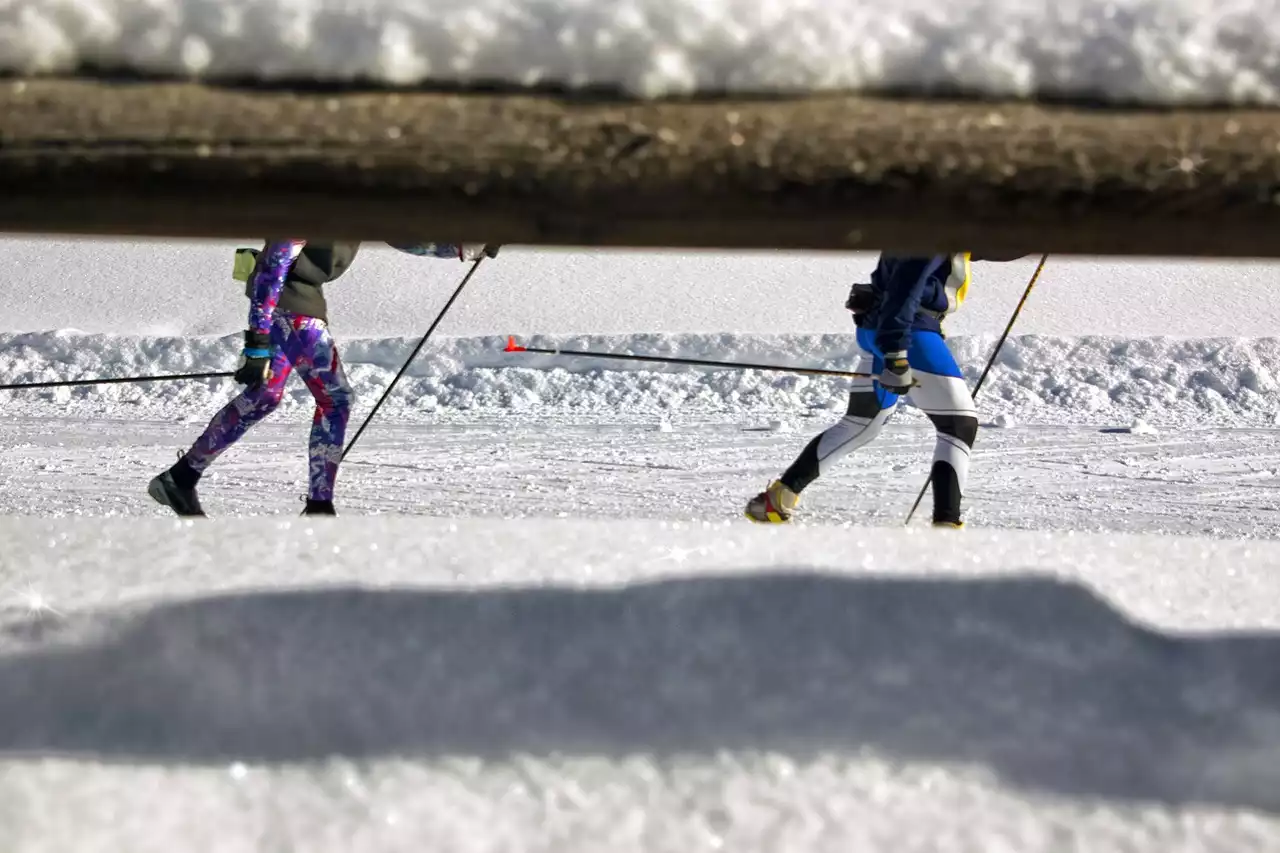Health and fitness benefits of cross country skiing
Cross country skiing is not just a fun winter activity, but also a fantastic way to improve your overall health and fitness. It engages multiple muscle groups and provides a low-impact, high-intensity workout. When you hit the trails, you'll be using your arms, legs, core, and glutes, all while improving your balance and coordination.
In addition to building strength and endurance, cross country skiing is a great cardiovascular workout. It gets your heart pumping and increases your lung capacity, helping to improve your overall cardiovascular fitness. Plus, the constant movement and varying terrains challenge your body in different ways, making it a great way to burn calories and lose weight.
Unlike other winter sports like downhill skiing or snowboarding, cross country skiing doesn't put as much stress on your joints. This makes it an ideal activity for people of all ages and fitness levels, including those recovering from injuries or dealing with joint pain. So, whether you're a seasoned athlete or just starting out, cross country skiing is a fantastic way to stay fit and active during the winter months.
Equipment and gear needed for cross country skiing
Before hitting the trails, it's essential to have the right equipment and gear for cross country skiing. The most important piece of equipment is, of course, the skis. Cross country skis are longer, narrower, and lighter than downhill skis, allowing for better maneuverability on flat terrain. They also have a fish-scale pattern on the base, which provides grip and prevents sliding backward.
In addition to skis, you'll need a set of poles that are specifically designed for cross country skiing. These poles are longer than downhill poles and have a smaller basket to prevent sinking into the snow. They help to propel you forward and maintain balance while skiing.
To keep your feet warm and dry, it's essential to invest in a good pair of cross country ski boots. These boots are typically lightweight, flexible, and have a higher ankle cuff for better support. They should fit snugly but not too tight, allowing for comfort and mobility.
Lastly, don't forget to dress appropriately for the weather conditions. Layering is key when it comes to cross country skiing, as you'll be working up a sweat but also need protection from the cold. Start with a moisture-wicking base layer, add a warm mid-layer, and finish with a windproof and waterproof outer shell. Don't forget a hat, gloves, and sunglasses to protect against the sun and wind.
With the right equipment and gear, you'll be ready to hit the trails and enjoy the thrilling experience of cross country skiing.
Techniques and training for cross country skiing
While cross country skiing may seem straightforward, mastering the techniques and training can greatly enhance your skiing experience. The two main techniques used in cross country skiing are classic skiing and skate skiing.
Classic skiing is the traditional technique, where skiers move in a straight line using a diagonal stride. This technique is best suited for flat or gently rolling terrain and is often used for long-distance skiing and touring. Skate skiing, on the other hand, mimics the motion of ice skating. Skiers push off to the side, propelling themselves forward in a V-shaped pattern. This technique is faster and more dynamic, making it ideal for racing or more challenging terrain.
To improve your cross country skiing skills, it's essential to practice proper technique and build strength and endurance. One way to do this is by incorporating specific exercises into your training routine. Strength training exercises such as lunges, squats, and core exercises can help to improve your overall strength and stability. Cardiovascular exercises like running or cycling can also help to improve your endurance and cardiovascular fitness.
In addition to physical training, it's also important to practice on the trails. Start with easier trails and gradually progress to more challenging ones as you build your skills and confidence. Take the time to observe experienced skiers and learn from their techniques. With practice and dedication, you'll soon be gliding effortlessly through the snow.
Top cross country skiing destinations around the world
One of the great things about cross country skiing is that it can be enjoyed in various locations around the world. From the snowy peaks of the Rockies to the picturesque trails of Scandinavia, there are endless opportunities for exploration and adventure. Here are some of the top cross country skiing destinations that should be on every skier's bucket list:
1. Norway: Known as the birthplace of cross country skiing, Norway offers some of the most stunning and well-maintained trails in the world. The country's vast and diverse landscapes provide the perfect backdrop for a winter adventure.
2. Sweden: With its vast wilderness and well-developed trail network, Sweden is a cross country skier's paradise. The country offers a range of trails suitable for all skill levels, from gentle tracks through forests to challenging routes in the high mountains.
3. Canada: From the Rockies in the west to Quebec in the east, Canada is home to some of the most breathtaking cross country skiing destinations. The country's national parks and wilderness areas offer a mix of groomed trails and backcountry skiing options.
4. USA: The United States boasts a wide range of cross country skiing destinations, from the famous trails of Vermont and New Hampshire to the scenic routes of Colorado and Alaska. Whether you prefer groomed trails or backcountry skiing, there's something for everyone.
5. Finland: With its vast forests and frozen lakes, Finland is a cross country skier's paradise. The country's well-marked trails and cozy huts make it an ideal destination for both beginners and experienced skiers.
No matter where you choose to go, cross country skiing in these destinations will provide you with unforgettable experiences and breathtaking scenery.
Safety tips for cross country skiing
While cross country skiing is a fun and exhilarating activity, it's important to prioritize safety on the trails. Here are some essential safety tips to keep in mind:
1. Check the weather conditions: Before heading out, check the weather forecast and be aware of any potential hazards such as strong winds or blizzards. Dress appropriately and carry extra layers in case the weather changes.
2. Stay on marked trails: Stick to designated cross country skiing trails and follow any signage or instructions. Venturing off the trails can be dangerous, especially if you're unfamiliar with the area.
3. Carry essential gear: Always carry a map, compass, and a whistle in case of emergencies. It's also a good idea to bring a small first aid kit, extra food, and water.
4. Tell someone your plans: Before heading out, let someone know where you're going and when you expect to return. This ensures that someone is aware of your plans and can raise the alarm if necessary.
5. Practice proper trail etiquette: Be aware of other skiers on the trail and yield to faster skiers. Avoid sudden stops or blocking the trail, and always ski in control.
By following these safety tips, you can enjoy a safe and enjoyable cross country skiing experience.
Cross country skiing for beginners
If you're new to cross country skiing, it's important to start slowly and gradually build your skills and confidence. Here are some tips to help beginners get started:
1. Take a lesson: Consider taking a lesson from a certified instructor to learn the basic techniques and get tips on improving your form. A lesson can help you avoid common mistakes and build a solid foundation.
2. Start on easy terrain: Begin with flat or gently rolling terrain to get comfortable with the movements and build your endurance. As you progress, you can gradually tackle more challenging trails.
3. Practice balance and weight distribution: Cross country skiing requires balance and coordination. Practice shifting your weight from one ski to the other and maintaining a stable and balanced position.
4. Focus on technique: Pay attention to your technique and try to mimic the movements of experienced skiers. Practice the classic and skate skiing techniques, and don't be afraid to ask for feedback or advice.
5. Gradually increase intensity: As you become more comfortable on the skis, gradually increase the intensity and duration of your workouts. This will help you build strength and endurance over time.
Remember, cross country skiing is a skill that takes time and practice to master. Be patient with yourself and enjoy the learning process.
Cross country skiing vs. other winter sports
When it comes to winter sports, cross country skiing offers a unique experience that sets it apart from other activities. Here's how cross country skiing compares to some popular winter sports:
1. Downhill skiing: Unlike downhill skiing, which involves gliding down steep slopes, cross country skiing is done on flatter terrain. It's a great option for those who prefer a more relaxed and scenic experience.
2. Snowboarding: While snowboarding is known for its tricks and jumps, cross country skiing focuses more on endurance and cardiovascular fitness. It's a great option for those looking for a full-body workout and a chance to explore nature.
3. Ice skating: Ice skating and cross country skiing both involve gliding on a surface, but they differ in technique and equipment. Cross country skiing offers a more challenging workout and the opportunity to explore vast landscapes.
4. Snowshoeing: Snowshoeing and cross country skiing are both popular winter activities, but they offer different experiences. Snowshoeing is slower and more focused on walking or hiking, while cross country skiing provides a faster-paced, gliding experience.
Ultimately, the choice between winter sports comes down to personal preference and fitness goals. Cross country skiing offers a unique blend of fitness, adventure, and connection with nature that sets it apart from other winter activities.
